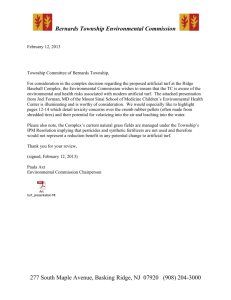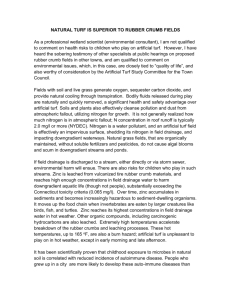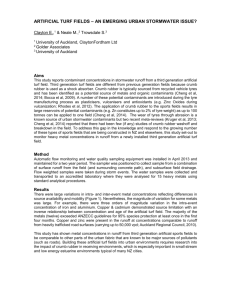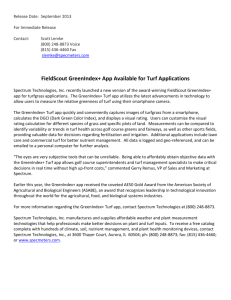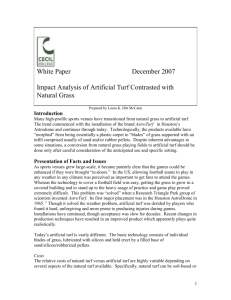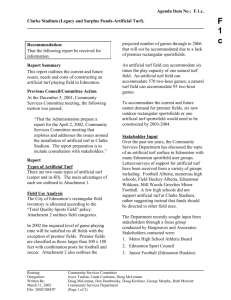Artificial Turf Fields Containing Recycled Crumb Rubber Infill
advertisement
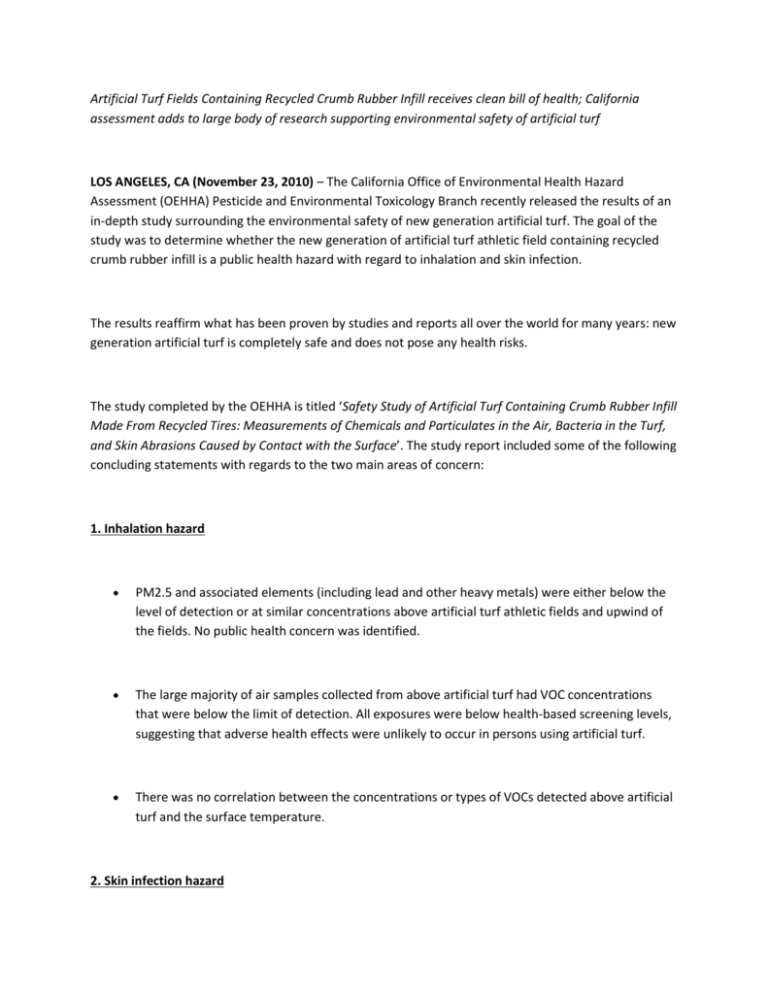
Artificial Turf Fields Containing Recycled Crumb Rubber Infill receives clean bill of health; California assessment adds to large body of research supporting environmental safety of artificial turf LOS ANGELES, CA (November 23, 2010) – The California Office of Environmental Health Hazard Assessment (OEHHA) Pesticide and Environmental Toxicology Branch recently released the results of an in-depth study surrounding the environmental safety of new generation artificial turf. The goal of the study was to determine whether the new generation of artificial turf athletic field containing recycled crumb rubber infill is a public health hazard with regard to inhalation and skin infection. The results reaffirm what has been proven by studies and reports all over the world for many years: new generation artificial turf is completely safe and does not pose any health risks. The study completed by the OEHHA is titled ‘Safety Study of Artificial Turf Containing Crumb Rubber Infill Made From Recycled Tires: Measurements of Chemicals and Particulates in the Air, Bacteria in the Turf, and Skin Abrasions Caused by Contact with the Surface’. The study report included some of the following concluding statements with regards to the two main areas of concern: 1. Inhalation hazard PM2.5 and associated elements (including lead and other heavy metals) were either below the level of detection or at similar concentrations above artificial turf athletic fields and upwind of the fields. No public health concern was identified. The large majority of air samples collected from above artificial turf had VOC concentrations that were below the limit of detection. All exposures were below health-based screening levels, suggesting that adverse health effects were unlikely to occur in persons using artificial turf. There was no correlation between the concentrations or types of VOCs detected above artificial turf and the surface temperature. 2. Skin infection hazard Fewer bacteria were detected on artificial turf compared to natural turf. This was true for MRSA and other Staphylococci capable of infecting humans. This would tend to decrease the risk of skin infection in athletes using artificial turf relative to athletes using natural turf. The environmental benefits of artificial grass have been well documented for years. Hundreds of studies have been completed to discover the truth about any potential risks of artificial turf. Government health ministries and environmental bodies around the world have commissioned extensive research. So have world health organizations, leading universities and independent scientific committees. Elected officials have reacted to the concerns of their constituents by commissioning studies to get the facts – and each time artificial turf has been found to be safe.
